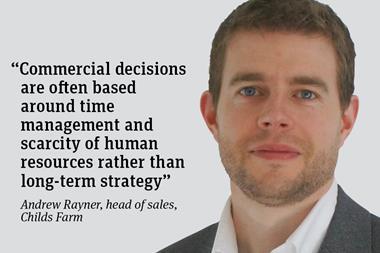
Most branded and many own-label companies have formal category strategies - explicit points of view on how to get growth in their categories in the medium to long term. Typically these are shared with retailers, in an attempt to agree a common direction for buyer and supplier.
You might expect the retailers to be all ears. Often it isn’t so. This is partly due to the intense pressure on short-term sales performance that buyers in the big grocers are experiencing. But there can also be suspicion of supplier motives. Is the category strategy just a selling tool for the supplier’s own agenda?
But in the current climate, good buyers are crying out for a clear growth strategy. So if you are a buyer, how can you go about building one?
First, do tap suppliers’ insight and resource. In many cases, suppliers have deep, game-changing knowledge of consumer motivation, which retailers cannot match. Many suppliers have great people thinking about category and insight, whose skills and knowledge can really help.
Second, ensure any category strategy thinking from your suppliers is grounded in your corporate strategy. Beware lip service to this. You should expect to see a real understanding of what your company is trying to do. If you have decided corporately to move away from multibuys, there’s no point in category-level recommendations for more of them!
Third, invest your time in getting to a strategy that you can own. Many suppliers will be happy to do the legwork for you, but you will have to invest enough of yourself, your time and your creativity in the process to feel the plan is genuinely yours. This requires you to carve out from the chaos of retail life some quality time to think - little and often.
Fourth, be ruthless about simplicity. Insight and category professionals can be guilty of over-complication. If you can’t easily recite the key elements of your plan, it isn’t simple enough. You need to get to a simple vision, three to five drivers and a few critical moves that have to be made, to deliver growth. No more.
Finally, seek a second and third opinion. If the strategy is truly yours, you should be comfortable sharing it with whoever you like. You may develop it with a “lead supplier” but sharing your thinking will help strengthen it and test for any bias you may be concerned about.
Ultimately you are seeking a strategy that you can stand behind with confidence and use as a compass for all your decisions. Everyone in the supply chain can benefit from that, so if buyers take these steps, and suppliers understand the need for them, there really will be win/wins from category strategy.
Jeremy Garlick is a partner of Insight Traction



















No comments yet